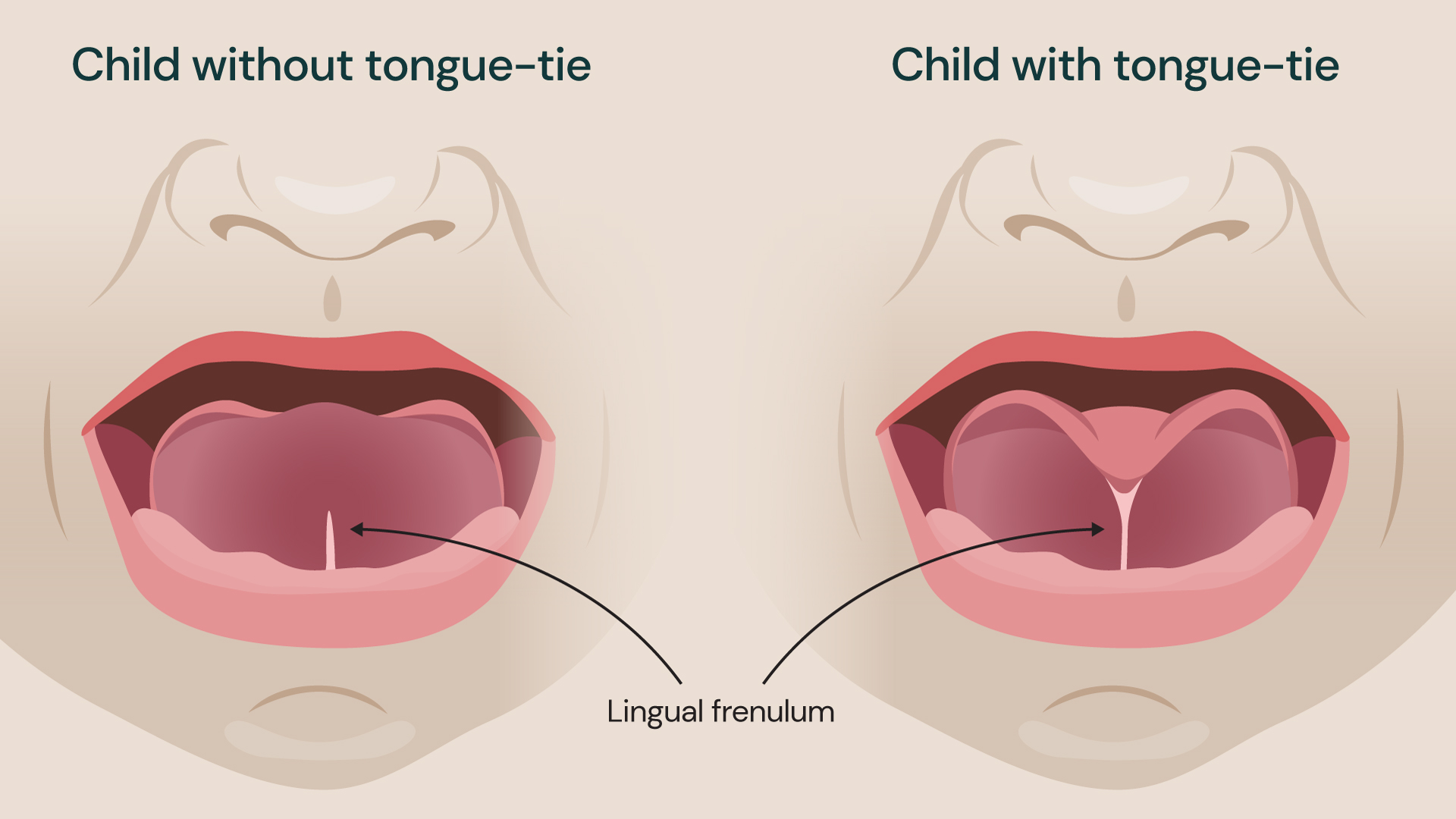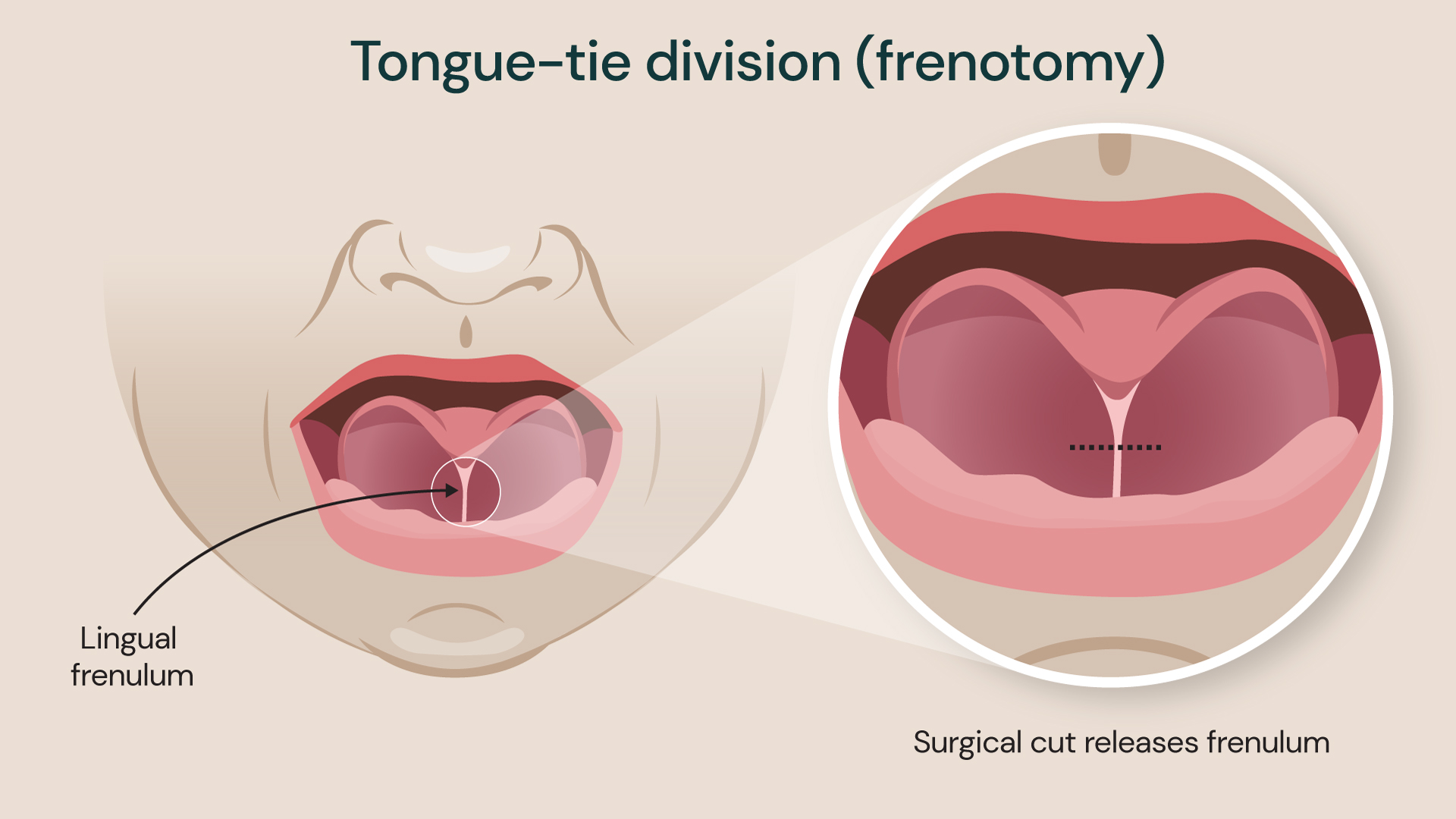Tongue-tie is a condition that affects the tongue and restricts its movement. Tongue-tie is not often a debilitating health condition however, that doesn’t mean it can’t cause problems for your child.
Tongue-tie (ankyloglossia) is usually diagnosed and treated during infancy, but it can be spotted in adulthood.
At Guy’s and St Thomas’ Specialist Care, we offer diagnosis and treatment of tongue-tie to provide relief from this sometimes problematic condition. We perform tongue-tie treatment on children and infants to ensure they can breastfeed and eat successfully.
Speak to our paediatric specialists
We provide easy, safe ways to treat tongue-tie and relieve any symptoms your child may be experiencing at Evelina London Children’s Hospital.
Our specialists are highly skilled in performing tongue-tie divisions in babies so you can rest assured that your child is in the safest hands.
What is tongue-tie?
Tongue-tie is a condition that is present at birth and can restrict the tongue’s range of motion.
If your child has tongue-tie, the band of tissue (frenulum) that connects the bottom of their tongue to the floor of their mouth is shorter and thicker than it should be. It can also be too tight.
The most common type of tongue-tie develops at the front of the tongue or the anterior frenulum. However, tongue-tie underneath and at the back of the tongue (posterior tongue-tie) is also possible.
Routine infant check-ups can sometimes reveal tongue-tie, but that is not always the case. The condition does not always require treatment; your child can have tongue-tie and not experience any problems. Your midwife or doctor may recognise it if your baby has problems feeding. However, if you suspect your child is experiencing problems, always talk to a doctor.

Tongue-tie, also known as lingual frenulum, restricts movement in the mouth
Signs of tongue-tie
Your baby or child may not experience any complications with tongue-tie if it is not severe. However, some signs that they may have tongue-tie include:
- difficulty sticking the tongue out very far
- problems lifting the tongue to the roof of their mouth and side-to-side
- speech issues when pronouncing letters such as ‘t’, ‘d’, ‘l’ and ‘th’
- a lisp
- a notched or heart-shaped tongue when stuck out
Babies may have difficulty breastfeeding with tongue-tie. They may be unable to successfully latch when feeding and have difficulty swallowing milk. These problems happen because the poor range of motion prevents the mouth from sealing when babies express milk from a bottle or your nipple.
If you are concerned about your baby’s eating habits, speak with your doctor or midwife. They can confirm a tongue-tie and rule out other health conditions causing poor feeding.
Tongue-tie symptoms
The symptoms of tongue-tie can vary depending on age. Symptoms of tongue-tie in babies are not just limited to problems when latching. They can also experience hunger and difficulty gaining weight due to their inability to feed correctly. You may also hear a clicking sound when they feed.
If you are breastfeeding and your child has tongue-tie, you might develop sore nipples and pain during feeding and a low milk supply.
Symptoms of tongue-tie in younger children are:
- speech difficulties
- swallowing problems
- struggling to play wind instruments
- issues when sticking their tongue out and up
Tongue-tie causes
Tongue-tie occurs during fetal development. Typically, the tongue and floor of the mouth will fuse and then separate while in the womb. This separation and fusing leaves a thin band of tissue connecting the tongue to the mouth. However, in the case of tongue-tie, this band remains thick.
The reason for tongue-tie development is not entirely known or understood. Experts think it’s genetic, with tongue-ties seemingly running in families. They are more common in boys, but again, no one is certain why.
Tongue-tie diagnosis
Tongue-tie is sometimes diagnosed during a baby’s newborn examination. However, it isn’t always easy to spot.
If you notice that your baby is having problems feeding, speak to your midwife or doctor. They will carry out a physical examination to see if your baby has tongue-tie by assessing the tongue’s movement and range of motion.
Midwives and doctors may sometimes miss tongue-tie during infancy, but diagnose the condition when they are an adult.
Tongue-tie treatment
Tongue-tie doesn’t always need treatment. However, if your baby is struggling to feed, treatment is necessary.
Tongue-tie division (frenotomy)
This procedure involves cutting the connecting frenulum underneath the tongue to improve your child’s symptoms instantly. Doctors use sterile scissors to perform a tongue-tie division either with or without anaesthetic. Tongue-tie division is almost painless and over quickly.

Surgical treatment for tongue-tie also known as frenotomy
In babies, doctors usually do not use anaesthetic. In older children they will likely need a general anaesthetic to divide it.
The procedure doesn’t seem to hurt young babies. This is because there are very few nerve endings in that area of their mouth.
Older babies and children will usually undergo the frenotomy with a general anaesthetic so that they will be asleep during it and remain still, which is paramount for their safety.
The procedure only takes a few minutes and does not cause much bleeding. Complications of tongue-tie division are rare. However, the frenulum can rarely reattach itself to the base of the tongue over time.
Complementary treatments
As well as tongue-tie division or a frenuloplasty, other accompanying treatments can help. A speech and language therapist can be useful if your child has speech problems caused by a tongue-tie. If you are breastfeeding a baby with a tongue-tie, then a lactation nurse or general paediatrician can provide further support.
Locations
Our children's services are located at:
Discover our children's ear, nose and throat specialists
From airway, breathing and voice problems to hearing implant interventions, our specialists are here to provide you with personalised care.
